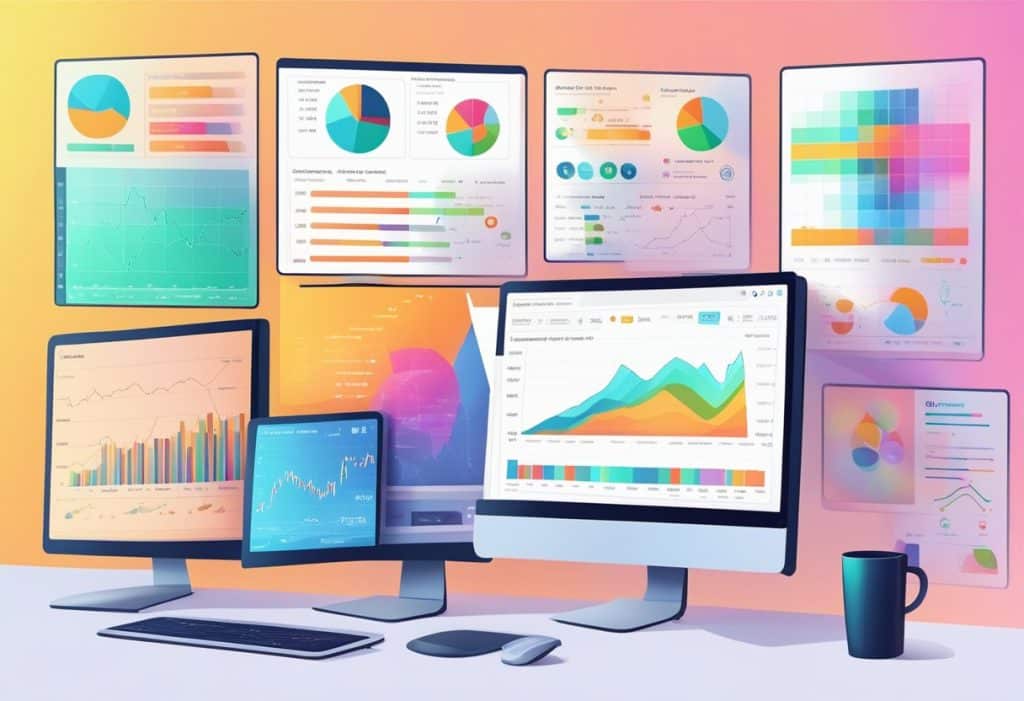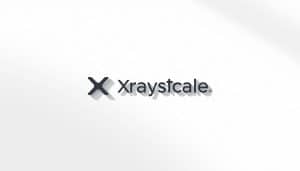Entering the world of cryptocurrency can be both exciting and overwhelming for newcomers. With a vast array of platforms to choose from, finding one that aligns with your level of expertise is crucial. Beginner-friendly crypto platforms are designed to lower the barrier to entry, offering an accessible route for those new to digital currencies. They typically provide a simplified interface, comprehensive educational resources, and customer support that can help demystify the complexities of trading cryptocurrencies.
When you’re starting out, it’s important to choose a platform that not only caters to the basics of buying and selling but also places a high emphasis on security to protect your investments. Fees and costs associated with transactions on the platform should be transparent and competitive to ensure that you’re not unnecessarily diminishing your potential returns. Moreover, the platform should come equipped with a variety of trading features and tools that can grow with you as you gain more confidence and experience in the crypto market.
Key Takeaways
- Select a platform with an easy-to-use interface and robust educational content.
- Prioritize security features and transparent fee structures in your chosen platform.
- Ensure the platform offers a range of tools to support your growth as a crypto trader.
Understanding Cryptocurrency Basics
Cryptocurrency is essentially a digital asset designed to work as a medium of exchange, where individual coin ownership records are stored in a ledger, which is a computerized database using strong cryptography to secure transaction records, control the creation of additional coins, and verify the transfer of coin ownership.
Bitcoin was the first cryptocurrency, launched in 2009 by an anonymous entity known as Satoshi Nakamoto. It’s the most recognized and widely used cryptocurrency, often referred to as digital gold. Ether is the second largest digital asset which operates on the Ethereum network; Ethereum is a platform for creating decentralized applications, with Ether being used to power transactions on the network.
Here are the key concepts to grasp when starting with cryptocurrencies:
- Decentralization: Unlike traditional currencies, there is no central authority that maintains or manages a cryptocurrency. This means you have complete control over your digital assets.
- Blockchain: The technology behind cryptocurrencies which records all transactions across a network of computers.
- Wallets: Digital tools where you store, receive, and send cryptocurrencies. It’s important to maintain strict security practices with your digital wallet.
| Term | Definition |
|---|---|
| Cryptocurrency | A digital or virtual currency that uses cryptography for security. |
| Bitcoin | The first and most well-known cryptocurrency. |
| Ether | The cryptocurrency used within the Ethereum network. |
| Ethereum | A decentralized platform that enables smart contracts and decentralized applications (Dapps). |
Getting started with cryptocurrencies involves creating an account on a cryptocurrency exchange, a platform where you can buy, sell, and trade a variety of digital currencies. There are many beginner-friendly crypto platforms that provide easy-to-use interfaces to help you navigate the crypto market.
Remember, the key to successfully navigating the crypto space is understanding these fundamentals and approaching investments with caution – never invest more than you can afford to lose.
Choosing a Beginner-Friendly Platform

When you’re taking your first steps into the crypto world, the choice of platform is crucial to your learning curve and overall experience. You’ll want to prioritize user-friendly interfaces that offer simplicity without sacrificing functionality. Educational resources are also paramount, as they can significantly smooth your journey into cryptocurrency trading.
Key features to look for:
- Intuitive navigation: Vital for helping you learn the ropes without feeling overwhelmed.
- Resources for learning: Look for platforms that provide tutorials, FAQs, and even market insights to enhance your understanding.
- Customer support: Essential for addressing your questions promptly and clearly.
Selecting a crypto exchange that caters to beginners doesn’t mean you should compromise on features. Here are some trusted names in the space:
- Coinbase: Widely recognized for its user-friendly interface, ideal for beginners.
- Kraken: Offers a solid range of coins with competitive fees and has a strong reputation for security.
- Binance: Known as the world’s biggest crypto trading platform, it also provides a beginner-friendly experience.
Remember, as a beginner, your priority is to find a cryptocurrency exchange that supports your learning, ensures easy navigation, and provides assistance when you need it. With the right platform, your entry into cryptocurrency can be both enjoyable and informative.
Evaluating Exchange Security Measures

When selecting a cryptocurrency exchange, your focus on security is paramount. Understanding and assessing the security measures in place on an exchange can protect your investments from threats.
Insurance and Safeguards
It’s essential that you choose an exchange that offers insurance on your digital assets against potential breaches. For example, some platforms may feature a Secure Asset Fund for Users (SAFU) to protect your interests in case of a security breach. Confirm whether the exchange has a clear policy regarding asset recovery should an attack occur.
Two-Factor Authentication
Incorporating two-factor authentication (2FA) is a non-negotiable security feature for any reputable platform. Platforms like Coinbase emphasize this layer of security to ensure that you’re the only one who can access your account. Always enable 2FA on any platform you use.
Cold Storage Options
A strong exchange should offer cold storage options to safeguard your cryptocurrencies offline, thus reducing the risk of hacking. Ensure your chosen platform stores the majority of customer assets in cold storage, similar to the safety measures adopted by exchanges such as Kraken.
Analyzing Fees and Costs
When you begin trading cryptocurrencies, understanding the structure of fees and costs is crucial for managing your investments effectively. Different platforms may have distinct fee models that can significantly affect your bottom line.
Understanding Trading Fees
Trading fees are incurred every time you buy or sell cryptocurrencies. These are often categorized as maker and taker fees. A maker fee is charged for placing a trade order that adds liquidity to the market, typically when you set a limit order that doesn’t fill immediately. Conversely, a taker fee applies when you place an order that matches immediately with an existing order, thereby taking liquidity away.
- Maker: Often lower than taker fees
- Taker: Usually a bit higher due to the immediate fulfillment of the order
Platforms like Coinbase and Kraken have different fee structures based on your 30-day trading volume. Generally, the more volume, the lower the fees.
Impact of Withdrawal Fees
In addition to trading fees, you must be aware of withdrawal fees. This is the cost you incur when you move your crypto from the exchange to your own wallet or another exchange. These fees are typically fixed regardless of the withdrawn amount, but they can vary widely between platforms.
- Fixed fees: Check each platform’s fee schedule
- Variable fees: May depend on the type of cryptocurrency or network congestion
For beginners seeking platforms with low transaction fees, it’s essential to consider both trading and withdrawal fees. Some platforms offer competitive trading fees but may charge higher withdrawal fees, which can affect your investment returns, especially if you frequently move funds around.
Exploring Trading Features and Tools
When you begin your venture into cryptocurrency trading, it’s crucial to understand the range of features and tools that platforms offer. These can significantly enhance your trading efficiency and help mitigate risks associated with the volatile crypto market.
Advanced Order Types
Advanced order types are a set of predefined instructions you can set for buying or selling cryptocurrencies that give you better control over your trades. Most beginner-friendly trading platforms provide a variety of these order types to accommodate your strategy. Spot trading, for example, allows you to purchase or sell instantly at current market prices. In contrast, futures trading involves contracts to buy or sell at predetermined prices in the future, which can be managed with orders such as:
- Limit Orders: Buy or sell at a specific price or better.
- Stop-Loss Orders: Sell at a predetermined price to minimize losses.
- Trailing Stop Orders: Same as stop-loss but the sell price moves with the market.
With margin trading, you can place these orders using borrowed funds from a broker, intensifying both potential gains and risks.
Automated Trading Systems
Automated trading systems enable you to set your trading on autopilot by using algorithms that execute trades based on preset conditions. On a trading platform, these systems can be particularly useful in managing:
- Spot and futures positions by automatically adjusting orders in response to market shifts.
- Margin requirements to reduce the risk of liquidation.
Platforms providing these systems may support features such as:
- Backtesting: This allows you to test your strategy using historical data before going live.
- API Integration: Connect custom trading bots for a more personalized and automated trading experience.
The integration of automated trading can be a game-changer, especially if you’re not able to monitor the market 24/7.
Assessing Platform Liquidity and Trading Volume
When you’re exploring crypto trading platforms, it’s crucial to consider liquidity. High liquidity indicates that you can buy and sell cryptocurrencies rapidly due to the presence of a large number of traders and frequent transactions. Moreover, platforms with high liquidity tend to have less price slippage, ensuring your trades are closer to the market prices you expect.
- Liquidity: This is the ability of the platform to allow you to execute trades quickly without significant price changes.
- Trading Pairs: The number of trading pairs a platform supports can affect liquidity. A higher number of pairs might imply more trading activity.
- Crypto Market: The overall performance and trends in the crypto market can influence liquidity. A bullish market may have higher trading volumes.
Look for platforms that provide a transparent view of their trading volumes. Some platforms may also be listed on sites like CoinMarketCap, showing their 24-hour trading volume and market rankings.
Here’s a simplified method to gauge liquidity:
- Identify the volume of trades in a specific time frame (e.g. 24-hour volume).
- Check the variety and availability of trading pairs; more options can mean better liquidity.
- Monitor how quickly your trades get executed during both peak and off-peak hours.
Liquidity can vary by platform and even by trading pair, so you might find one platform is more liquid for Bitcoin, while another is better for altcoins. Sites like OKX provide liquidity rankings that can guide your choice.
High liquidity is often an indicator of a robust and trustworthy platform. As you assess different platforms, remember that liquidity is a dynamic aspect of the crypto market, impacted by factors such as market volatility and regulatory news, which can change swiftly. Keep this in mind as part of your broader due diligence process.
Support and Customer Service Quality
When venturing into cryptocurrency trading, the quality of customer support can significantly impact your experience. Recognized platforms prioritize your access to help and ensure a smoother start.
- Coinbase: Known for a user-friendly interface, Coinbase is favorable for beginners. Even with some critiques regarding response times, it typically offers a range of support options, including an extensive FAQ section, email support, and more. You can find further insights in this Laptop Mag article.
- Binance.US: This exchange often has high marks for a seamless trading experience but keep in mind that the level of customer service may vary.
- Kraken: Boasts one of the more comprehensive customer care systems with 24/7 support to assist with any queries. Rapid response times and a dedicated support team mean you’re often well looked after.
- Gemini: Gemini’s strong customer service reputation is built on accessibility, offering various contact methods including live chat and email support.
Support channels across most platforms typically include:
- Live chat
- Social media assistance
- Phone support (usually limited)
For detailed analyses on platforms with standout support services, Forbes Advisor provides a current rundown of the top exchanges.
It’s imperative to choose an exchange that offers solid customer service. Your peace of mind hinges on how effectively a platform can address your issues and guide you through the complexities of digital currency trading.
Comparing Payment and Withdrawal Options
When you’re starting in the world of cryptocurrency, understanding the different payment and withdrawal options available to you is crucial. The platforms you choose should offer a balance of convenience and security to fit your financial needs.
Credit Card and Bank Transfers
Credit Cards: Most beginner-friendly crypto platforms allow you to purchase digital currencies using your credit card. This method is often instantaneous, which means you can start trading almost immediately after your purchase. For example, Coinbase offers this convenience, but it’s important to be aware of additional fees that might apply.
Bank Transfers: Alternatively, bank transfers are generally considered more secure and can incur lower fees compared to credit cards. However, they might take a longer time to process, ranging from a few hours to a few business days. Platforms like Kraken provide bank transfer options for both deposits and withdrawals, giving you a reliable way to manage your funds.
Cryptocurrency and Fiat Currency Support
Cryptocurrency Support: Your chosen platform should support a wide array of cryptocurrencies, granting you the flexibility to trade or invest in diverse digital assets. Exchanges like Binance.US are known for offering an extensive list of supported cryptocurrencies, which is beneficial for expanding your investment portfolio.
Fiat Currency Support: Many crypto exchanges enable you to transact with multiple fiat currencies, making it easier to buy and sell digital currencies without the need to convert your money through external services. This support of fiat currencies allows seamless integration with traditional bank accounts. Crypto.com is an example of an exchange that provides a broad range of fiat currency options.
Diverse Investment Opportunities
When you venture into the world of cryptocurrency, you’re greeted with a plethora of investment opportunities beyond the typical buying and selling of digital assets. Understanding the varying channels, such as staking, lending, and the wide array of alternative coins and tokens, can empower you to make informed investment decisions.
Staking and Lending Options
Staking
Staking is an investment avenue that allows you to earn rewards simply by holding certain cryptocurrencies. By participating in a network’s staking process, you help validate transactions and secure the network. This not only rewards you with additional coins but also contributes to the network’s overall stability and security. For example, platforms like Kraken offer competitive staking options for various cryptocurrencies.
Lending
Lending your cryptocurrency can generate passive income. By providing your assets as loans on specific lending platforms, you can earn interest over time. Ensure you understand the terms and the platform’s credibility as risks can vary. Several beginner-friendly crypto apps present safe lending opportunities with clear terms for your investment.
Exploring Altcoins and NFTs
Altcoins
Investing in altcoins, which are basically any cryptocurrencies other than Bitcoin, can diversify your portfolio. Given the sheer number and variety of altcoins, diligent research into their market position, use case, and technology is key. Some notable exchanges highlighted in the article Best Crypto Exchanges for Beginners provide access to a broad selection of these alternate investments.
NFTs (Non-Fungible Tokens)
NFTs have carved a niche in the crypto space. These unique digital assets can signify ownership of art, collectibles, and other one-of-a-kind items. They’re an exciting, albeit speculative, frontier for investors looking to venture beyond coins and tokens. Be aware of market trends and platform specifics; resources like Forbes Advisor can guide your initial steps into this innovative market.
Global Accessibility and Currency Support
When you’re stepping into the world of cryptocurrency, one of the crucial factors to consider is the platform’s global accessibility. A platform with broad international reach ensures that you can trade from almost anywhere. Platforms like Coinbase are exemplary for their wide availability, granting users, particularly beginners, an opportunity to purchase, sell, and trade cryptocurrencies with ease.
Currency support is equally vital. You’ll want a platform that allows you to trade in multiple fiat currencies such as EUR, USD, AUD, CAD, and GBP. This type of support simplifies the process, as it allows you to fund your account with your local currency and avoid conversion fees.
Supported Fiat Currencies by Popular Platforms:
- Coinbase: USD, EUR, GBP, and more
- Kraken: Offers extensive support including USD, EUR, CAD, AUD, GBP, and others
- eToro: USD, EUR
In the United States, it’s crucial to choose a platform that is compliant with local regulations. Not all platforms operate in the U.S., so checking the platform’s availability in your region should be among your first steps.
To sum up the key points:
- Ensure the platform is accessible in your region, including the United States.
- Look for support for multiple fiat currencies such as EUR, USD, AUD, CAD, and GBP to make transactions smoother.
- Choose a platform that aligns with your needs, whether you prefer an easy-to-use interface for beginners or advanced features for more experienced trades.
Exploring Types of Exchanges
When you start trading cryptocurrencies, the type of exchange you choose will impact your experience. Here, you’ll learn the difference between centralized and decentralized platforms and what specific offerings various exchanges might provide.
Centralized Versus Decentralized
Centralized exchanges (CEX) are the traditional platforms you might have heard of. These exchanges, like Coinbase and Binance.US, act as intermediaries in your transactions. They are known for their user-friendly interfaces, making them a top choice for beginners. Security and reliability are their selling points, as they often come with customer support and an established reputation.
On the other hand, decentralized exchanges (DEX) offer a different approach. Platforms such as Uniswap and SushiSwap operate without a central authority. This means that trades are peer-to-peer, providing you with a higher degree of privacy and control over your funds. However, they can be less intuitive for newcomers and may require an existing understanding of blockchain technology.
Exchange-Specific Offerings
Each crypto exchange comes with its unique set of offerings. For instance, while Kraken offers a comprehensive suite of tools for beginners and advanced traders alike, other platforms like Crypto.com entice users with specific financial products such as crypto-backed Visa cards that allow for easy spending.
Exchange-specific offerings could include:
- Educational resources: to help new traders learn the ropes,
- Advanced trading tools: such as futures and options for when you’re ready to level up,
- Variety of cryptocurrencies: allowing for a broader investment portfolio,
- Staking and savings services: enabling you to earn interest on your holdings.
It’s essential to assess the offerings of each exchange to determine which will best suit your trading style and goals.
Frequently Asked Questions
Navigating the world of cryptocurrency can be overwhelming for beginners. This section covers key frequently asked questions to help you find the most user-friendly platforms and apps to get started with trading digital currencies.
What are some user-friendly cryptocurrency exchanges for new investors?
Cryptocurrency exchanges like Coinbase are noted for their ease of use, making them a popular choice for new investors. They offer intuitive interfaces that simplify the process of buying, selling, and trading a variety of digital currencies.
Which cryptocurrency applications are considered the most suitable for beginners?
Applications such as eToro are highlighted for their user-friendly interfaces and simplified trading process, catering especially to beginners. Their platforms may also include educational resources to guide first-time users.
What is the simplest cryptocurrency platform for initiating trades as a beginner?
Beginner traders often require platforms that balance simplicity with functionality. Gemini is recognized for its user-friendly interface, which is suitable for initiating trades without overwhelming users with complex features.
Can you recommend any free platforms geared toward novice crypto users?
Many platforms allow new users to sign up and explore the essentials of crypto trading for free. eToro, for example, is known for its free plans and is commended for being beginner-friendly.
What are the key features to look for in a beginner-friendly crypto trading platform?
To find a beginner-friendly platform, you should look for clear interfaces, straightforward navigation, educational content, and robust customer support. Platforms like Coinbase often fit these criteria, making them ideal for newcomers.
How do I choose the best crypto trading app with a beginner-friendly interface?
Choosing the best trading app involves considering factors such as ease of use, fee structures, security features, and the availability of a responsive support team. Research and compare apps like Coinbase and Gemini, which are both known for prioritizing a novice-friendly experience.
























 Bitcoin
Bitcoin  Ethereum
Ethereum  Tether
Tether  XRP
XRP  USDC
USDC  Solana
Solana  TRON
TRON  Lido Staked Ether
Lido Staked Ether  Dogecoin
Dogecoin  Figure Heloc
Figure Heloc  Cardano
Cardano  WhiteBIT Coin
WhiteBIT Coin  Wrapped stETH
Wrapped stETH  Bitcoin Cash
Bitcoin Cash  Wrapped Bitcoin
Wrapped Bitcoin  USDS
USDS  Binance Bridged USDT (BNB Smart Chain)
Binance Bridged USDT (BNB Smart Chain)  Chainlink
Chainlink  Wrapped eETH
Wrapped eETH  LEO Token
LEO Token  Monero
Monero  WETH
WETH  Hyperliquid
Hyperliquid  Stellar
Stellar  Zcash
Zcash  Ethena USDe
Ethena USDe  Coinbase Wrapped BTC
Coinbase Wrapped BTC  Litecoin
Litecoin  Sui
Sui  Avalanche
Avalanche  Hedera
Hedera  sUSDS
sUSDS  Shiba Inu
Shiba Inu  USDT0
USDT0  Dai
Dai  Mantle
Mantle  PayPal USD
PayPal USD  Toncoin
Toncoin  World Liberty Financial
World Liberty Financial  Cronos
Cronos  Ethena Staked USDe
Ethena Staked USDe  Uniswap
Uniswap  Polkadot
Polkadot  Aave
Aave  MemeCore
MemeCore  USD1
USD1  Rain
Rain  Canton
Canton